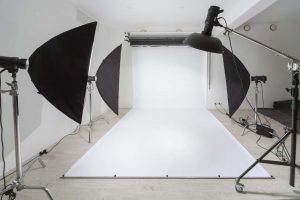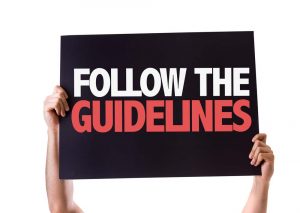 Today’s technology is allowing actors the convenience of self-taped auditions. More and more casting directors are having actors send in their own self-taped auditions to be seen for the part without having to come in and audition in person.
Today’s technology is allowing actors the convenience of self-taped auditions. More and more casting directors are having actors send in their own self-taped auditions to be seen for the part without having to come in and audition in person.
Occasionally, this may be in addition to a more traditional way of auditioning which helps to filter out a good chunk of candidates, and this saves time for both actors and casting directors. On top of saving time, there are other great benefits to self-taped auditions: actors don’t have to travel, which saves money on gas, and of course it gives the actor much more control over their audition.
However, if you’re an actor who is used to a more traditional way of auditioning in a casting room, you may find self taping your audition a little daunting, especially due to lack of feedback. It does get easier and more comfortable the more you self-tape your auditions, and it won’t be long before you’ll be an expert at it, producing high quality auditions via self tapes.
Here are eight tips on how to do a self-tape audition at home that will hopefully help you get your next good part.
Self-Taped Auditions 101: How To Do a Self-Tape at Home
1. Quality of your self-taped audition
The first thing you should remember with self-taped auditions is that the casting director and the team will not expect to see film quality that resembles a high budget Hollywood movie.
CDs fully appreciate that you are doing it yourself with your own equipment, for instance a cheap video recorder, a DSLR camera or your mobile phone. Try and make your self-tape as professional as you can but don’t worry about the tape appearing off center for instance.
As long as the quality of your self-tape is decent enough where they can see you and your expressions, casting directors will be more interested in your audition rather than criticizing your production skills. Just make sure that you can be seen and that you can be heard: these are the things that matter when auditioning.
Alternatively, you can always spend a little extra and use self-tape audition services for actors that are becoming very common these days.
2. The importance of lighting
 Obviously, the light where you are taking the self tape audition won’t be of professional quality, but it is somewhat important. Lighting can make or break your look and the casting director has to be able to see you clearly.
Obviously, the light where you are taking the self tape audition won’t be of professional quality, but it is somewhat important. Lighting can make or break your look and the casting director has to be able to see you clearly.
There are a few easy things you can do to ensure a good light for your self-tapes. Definitely choose a room that’s well lit and always make sure that there are no light sources behind you. Don’t stand in front of a window when you are self-taping your audition, as being in front of a light will make you appear dark and the casting director will find it hard to see you.
Always do a test run first and then play it back. If you see that you are dark in the pictures then find another area where the light may be better for filming. It is a matter of trial and error but it has to be spot on, otherwise you won’t be seen properly and that could potentially get your self-tape “thrown into a bin” even if your acting is good.
3. Choose your background carefully
When recording a self-tape audition, the background is also very important. An ideal background is usually a blank one. Doors have always been a popular background, but if that’s not an option for you then just try and find a background where not much is going on (no patterns, nothing to distract the CD from you and your face) and with the least amount of things behind you.
The less distractions are in the background the better, and that will make your audition more pleasing to the casting director and the rest of the team watching you.
The easiest way you can do this if you’re recording a self-tape at home is to grab a single-color blanket, or sheets, and throw them on the wall behind you. Pick colors that favor your face and make you stand out. Grey often works well. And, if you can spend a little extra, you can grab a green screen backdrop or something like that on Amazon; they’re usually cheap.
4. Clothing choice for self-tapes
 Choosing clothes for your self-tape audition can also be an important consideration, and you really want to be wearing a solid color. Clothing that’s free from very bright and busy patterns works best for self-taped auditions. Keep your clothing as simple as you can and try to avoid too many accessories or jewelry.
Choosing clothes for your self-tape audition can also be an important consideration, and you really want to be wearing a solid color. Clothing that’s free from very bright and busy patterns works best for self-taped auditions. Keep your clothing as simple as you can and try to avoid too many accessories or jewelry.
Another thing that needs to be mentioned is that the camera does tend to add extra weight to your body. So ideally you don’t want to be wearing clothes that aren’t too tight or clothes that appear too big on you. Wear what you’re comfortable with and just try and be yourself. Simplicity will work best here, unless you’re aiming at specific character choice.
5. Apply make up
If you want to show off your features then applying makeup will do this perfectly. The camera can make people looked a little washed out so makeup will work really well to prevent this.
Apply your make-up many times and check how you look after each application to see what looks best for you when you’re on camera. This may also boost your confidence. Just remember to keep your make-up to a minimal and do only the most essential things.
6. Show off your personality
 If you already have auditioning instructions for your self-tape, then you know what you have to say or do specifically. If you do have instructions then just follow them, but if there are no specified instructions then just carry on how you would for a regular audition.
If you already have auditioning instructions for your self-tape, then you know what you have to say or do specifically. If you do have instructions then just follow them, but if there are no specified instructions then just carry on how you would for a regular audition.
Remember to slate first. You should state your name, and then go on to say the name of the character you are auditioning for. Your slate should be friendly and it should also show you are confident at your audition; do not be robotic. This is your first chance to show that you are a professional and that you have a personality.
First impressions can be ruined by appearing too monotone, and a little personality goes a long way not only for self-taped auditions but in the acting business in general. It’s vague to say “don’t be boring,” but most of us usually know what that means.
7. Stop filming when the time is right
This is easier said than done, but you have to know when enough is enough and when it’s time to press that stop button for good. It is very easy to film one take and then watch it, then decide something isn’t right and so you carry out another take and watch it and then decide something else is wrong.
Doing this over and over can end up driving you crazy and even though you definitely should try plenty of takes to get that best shot, remember that you do have to stop at some point.
The best advice here would be this: after you “warmed up” to your camera (1-2 takes), try doing a single-take best shot just a couple of times and consider it done. Try and approach it the way you would traditionally as if you were auditioning in front of the casting director in person. Give the very best performance you can give on the first “real” take.
If you have to carry out more than one or two takes, allow yourself just one more and then stop, that’s it; send your self-tape audition tot the casting director and move on.
8. Follow the submission instructions correctly
 At this point, you’ve successfully completed your self-tape audition and you’re happy with it. Now it’s time to send it in. Make sure you follow instructions on how to send in your self-taped audition correctly and check over and over again that you have done all that needs doing.
At this point, you’ve successfully completed your self-tape audition and you’re happy with it. Now it’s time to send it in. Make sure you follow instructions on how to send in your self-taped audition correctly and check over and over again that you have done all that needs doing.
Do you have to upload your audition onto a website? Or are you meant to send it via email? Are they asking for your resume and headshots alongside the self-tape? Are they asking for your clothing size or other measurements?
Always make sure you are providing the casting director with your correct email address and phone number for when they get back in touch with you. Try to keep this organized and professional.
Final thoughts on recording self-tape auditions
As you can see, recording a self-tape audition can be an exciting process that gives you more control of your audition than you would get when auditioning in person. You get to record your audition in the comfort of your own home, with as many tries as you wish, and you send it in whenever you feel that it’s ready to go.
Self-tapes are becoming very popular right now, and honestly it’s a great way to audition for parts outside of your area, or when you’re lacking time. This is much more convenient than having to attend traditional auditions.
The main things to remember when recording a self-tape audition at home:
- Always be yourself and show your personality
- Stay confident and focus on a single-take delivery
- Choose an area with good lighting or improve lighting yourself
- Make sure you can be heard and seen well
- Have a good reader to read lines with you!
Now it’s time to apply for more projects, even if they’re outside of your area, and start recording those self-tapes.
Here’s a good video on self-taping your audition with some very valuable tips:


